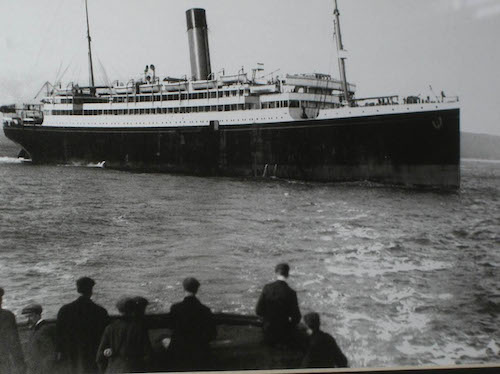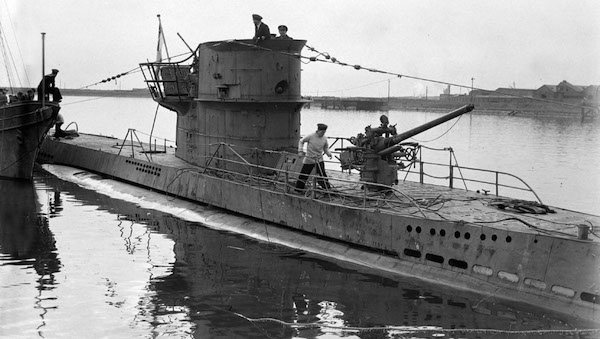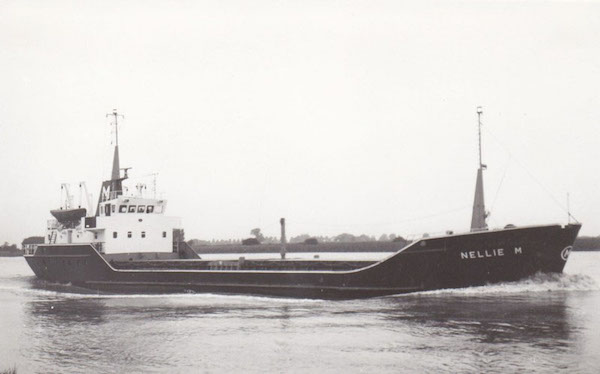A new website and interactive map outlining thousands of shipwrecks along the Irish coastline reveals details of many past Inishowen marine tragedies.
The National Monuments Service Wreck Viewer pinpoints the location of thousands of shipwrecks over the past four centuries, including hundreds that lie beneath the waters here. View the map here: https://dahg.maps.arcgis.com/apps/webappviewer/index.html?id=89e50518e5f4437abfa6284ff39fd640
More than thirty shipwrecks [and aircraft] lie hidden in the waters of Lough Foyle and Lough Swilly, while hundreds more were lost in the waters north of Malin Head, many of them during World War I.
The new service details the loss of cargo and passenger ships, warships and submarines as well as a number of fishing vessels.
Some of Inishowen’s most well-known historic shipwrecks, such as the Spanish Armada, the Laurentic and the Saldanha, are newly documented, while more modern losses such as the Nellie M and the Boy Shaun are also included.
In total, the wreck viewer database holds information on more than 18,000 wrecks, although many of them are listed as ‘unknown’, their stories having long since faded with the passage of time.
SS Laurentic

The wreck of the Laurentic lies 120 feet below the waves of Lough Swilly. Many of the 350 dead are buried in Fahan and Cockhill.
SS Laurentic sank with the loss of more than 350 people shortly after setting sail from Buncrana on January 23, 1917.
Many of the dead were buried at Fahan and Cockhill while the 121 survivors were cared for at a reception in Derry’s Guildhall.
The ship was built at Harland and Wolff in Belfast in 1907 and met its end in Lough Swilly ten years later.
Originally purposed as one of the fastest and most luxurious passenger ships of its time, the Laurentic transported people between Liverpool and Quebec in Canada, and regularly sailed past the spot where the Titanic sank in 1912.
Following the outbreak of World War in 1914, the Laurentic was converted into an armed merchant cruiser and was used by the British Navy to carry troops, ammunition and gold.
More than 350 passengers and crew lost their lives when the ship came to rest 120 feet below the waves of Lough Swilly after striking a mine. The impact of the sinking was felt across the North-West as frozen bodies washed up on shore for days afterwards.
One of the dead was Derry man Andrew Steele, who had been working on the ship as an assistant cook. His name is listed on the Diamond War Memorial in Derry.
La Trinidad Valencera
The fourth largest of the ships that made up the Spanish Armada, this requisitioned Venetian merchantman of 1,100 tons was lost in Kinnego Bay in September 1588. The wreck lies in shallow water approximately 100 meters offshore.
On September 12, Trinidad Valencera was caught in a storm off the north coast of Ireland and, leaking badly, came to anchor at Kinnego on the 14th. Two days later, she split in two and sank.
Most of the ship’s company seem to have made it safely to shore. About 40 lives were lost when she sank while more than 350 survivors reached the shore.
The wreck lay at the bottom of the waters approximately 100 metres offshore for almost four centuries before being discovered by the City of Derry Sub-Aqua Club in 1971.
The main body of artefactual material recovered from the ship is housed in the Tower Museum in Derry, while a large, ornate siege cannon is also on display in the National Museum of Ireland.
A plaque, which commemorates the 400th anniversary of the Armada was erected in Kinnego Bay by Bord Failte, Donegal/Leitrim/Sligo Regional Tourism Organisation and Donegal County Council in 1988.
Nellie M
The Nellie M cargo ship was bombed and sunk during an audacious IRA attack off the coast of Moville on Friday, February 6, 1981.
The £3 million vessel, which had set off from Liverpool was loaded with thousands of tonnes of coal. It was anchored off Carrickarory Pier when an armed unit of twelve masked men struck.
The gang hijacked the local pilot boat and forced the Moville pilot, at gunpoint, to take them aboard the Nellie M. Seven IRA volunteers boarded the boat to plant explosive charges while a further five stood guard at the pier.
The Nellie M was eventually raised and refurbished in 1982. The ship was sold to an Irish company and re-named Ellie before JR Rix & Sons Ltd of Hull bought her in 1984 and christened her Timrix. In the year 2000 she crossed the Atlantic for new Columbian owners and she is still trading as the Dove.
Saint Bedan
In a similar attack in February 1982, the IRA targeted another coal ship, the Saint Bedan, in Moville.
An IRA boarding party of 12 volunteers seized the boatd. The attack was again launched from the pilot boat based at Moville, and after the explosions, the cargo vessel sank on her starboard side in some 15 meters of water. She was raised and scrapped by November 1982.
Crashed aeroplanes
A light aircraft out of Eglinton Flying Club crashed in the Foyle in 1975 killing the pilot, the only person onboard.
The plane, a Grumman American AA-IB Trainer, dived into Lough Foyle on September 12th on a downwind approach to Eglinton airfield.
The wreckage of the plane was not recovered and currently lies in the middle of the Foyle, near McKinney’s Bank off Moville.
In 2001 the Inishowen diving club discovered the wreckage of another plane in Lough Foyle, a Second World War B17 bomber. The Flying Fortress was upside down in about 21 metres of water. The 12 crew on board escaped when the plane was forced to ditch in September 1942, while en route from the US to a Royal Air Force base in southern England.
Meanwhile the wreckage of an unknown third plane was found by diver John O’Raw while looking for the Saldanha in Lough Swilly.
Boy Shaun
The national monuments wreck archive also details the loss of a local fishing vessel, the Boy Shaun, almost 31 years ago.
Four fishermen died tragically when the 34ft trawler sank off Malin Head on September 20, 1987.
Glengad fisherman Barney McDaid (56) died with his sons, Patrick (33) and Charlie (20), and his nephew David McDaid (27). All four were experienced fishermen.
John McDaid (29) survived the tragedy after clinging to a plank of wood in the sea for forty minutes before he was rescued by a nearby vessel, the Carraig Eamonn.
The weather was mild and water calm when the crew of the Boy Shaun set off from Portaleen Pier headed for Inishtrahull Island off the coast of Malin Head in search of crab. They were not wearing life jackets.
Two bodies, including the remains of Mr McDaid, were pulled from the water while two others were recovered several months later on the coast of Scotland.
German U-boats
As many as 20 World War Two German U-boat submarines were wrecked off the Inishowen coast, including the U-861 lost at Inishtrahul in 1945 and the U-1003, which sank off Kinnego Bay after colliding with the HMCS New Glasgow in March of the same year.
Many of the U-boats were scuttled or sunk in Operation Deadlight after being surrendered to the Allied Forces. A total of 116 were scuttled between November 1945 and February 1946.
One of the German submarines, the U-281, was due to be scuttled but sank while being towed around 20 miles north of Malin Head and now lies in 67 metres of water, having been found by divers in 2001.
During one such engagement, in October 1943, it shot down a Royal Canadian Air Force Sunderland southwest of Iceland. Three crew of U-281 were wounded during this encounter. The submarine spent much of 1944 patrolling off Britain and Ireland, but failed to sink any vessels. At the end of hostilities U-281 surrendered at Kristiansand, Norway, in May 1945 and was brought to Loch Ryan in Scotland.
HMS Saldanha, SS Florence
HMS Saldanha was a gun ship of the British Navy, launched in 1809 and wrecked two years later in Lough Swilly in December 1811.
The wreck of the 36-gun Apollo-class frigate lies underwater at the south end of Ballymastocker Bay and has been the subject of many local dives.
Saldanha shipwrecked in a gale on the night of December 4, 1811 while possibly attempting to return to her anchorage.
There were no survivors out of the estimated 253 aboard, and some 200 bodies washed up on the shore at Ballymastocker Bay on the Fanad side of Lough Swilly.
On Sunday 4 December 2011 a special ceremony was held to mark the 200th anniversary of the sinking. It was the first commemorative event recalling what is one of Ireland’s worst ever marine disasters.
Also in Lough Swilly lies the wreck of the steamship, the SS Florence, lost close to the Buncrana Lighthouse on January 3, 1924.
The National Monuments Service records little else about the vessel and its sinking however.
Stypie, Erria
The 19th century sailing vessel, the Stypie, sank near Moville in Lough Foyle in January 1905, approximately 890 metres to the south of Carrickarory Pier. The wreck lies upright on the seabed in 10-18 metres of water.
Meanwhile the 53-metre-long MVErria was a Danish vessel that ran aground and was wrecked close to Shroove Beach during a storm on February 27, 1981.
Carthaginian
While on a voyage from the Clyde to Montreal with general cargo, the Carthaginian struck a German mine 2.5 miles northwest of Inishtrahull and sank on 14 June 1917.
The tragedy, which occurred during World War I, resulted in the loss of 32 lives. Survivors were picked up by a British naval vessel and brought ashore at Buncrana.
The Carthaginian was a 4,444-ton steel steamship owned by the Allan Line Steamship Co. Ltd. of Govan, Glasgow.
The vessel was built in 1884 by Govan Shipbuilding Co. Ltd. It had a crew of 57, under the command of Captain A. Ogilvie, and could carry 596 passengers in three classes.
Before the outbreak of hostilities in 1914 the vessel plied various transatlantic routes, typically out of Glasgow. She was subsequently armed with a 4-inch stern gun.
The Carthaginian was one of 22 ships sunk by U-79 during 11 patrols. The HMT Corientes and HMT Charles Astie were also mined just north of Malin Head in June 1917 by the same U-boat.
The wreck of the Carthaginian lies on the seabed and measures 116 metres in length, 21m in width and 4.3m in maximum height, with an average height of 2.1m. Although it is well broken up, there is still plenty to see on this wreck. The defensive stern gun can be found beside the rudder quadrant, along with the boilers and engine amidships. The bow is fairly upright.









